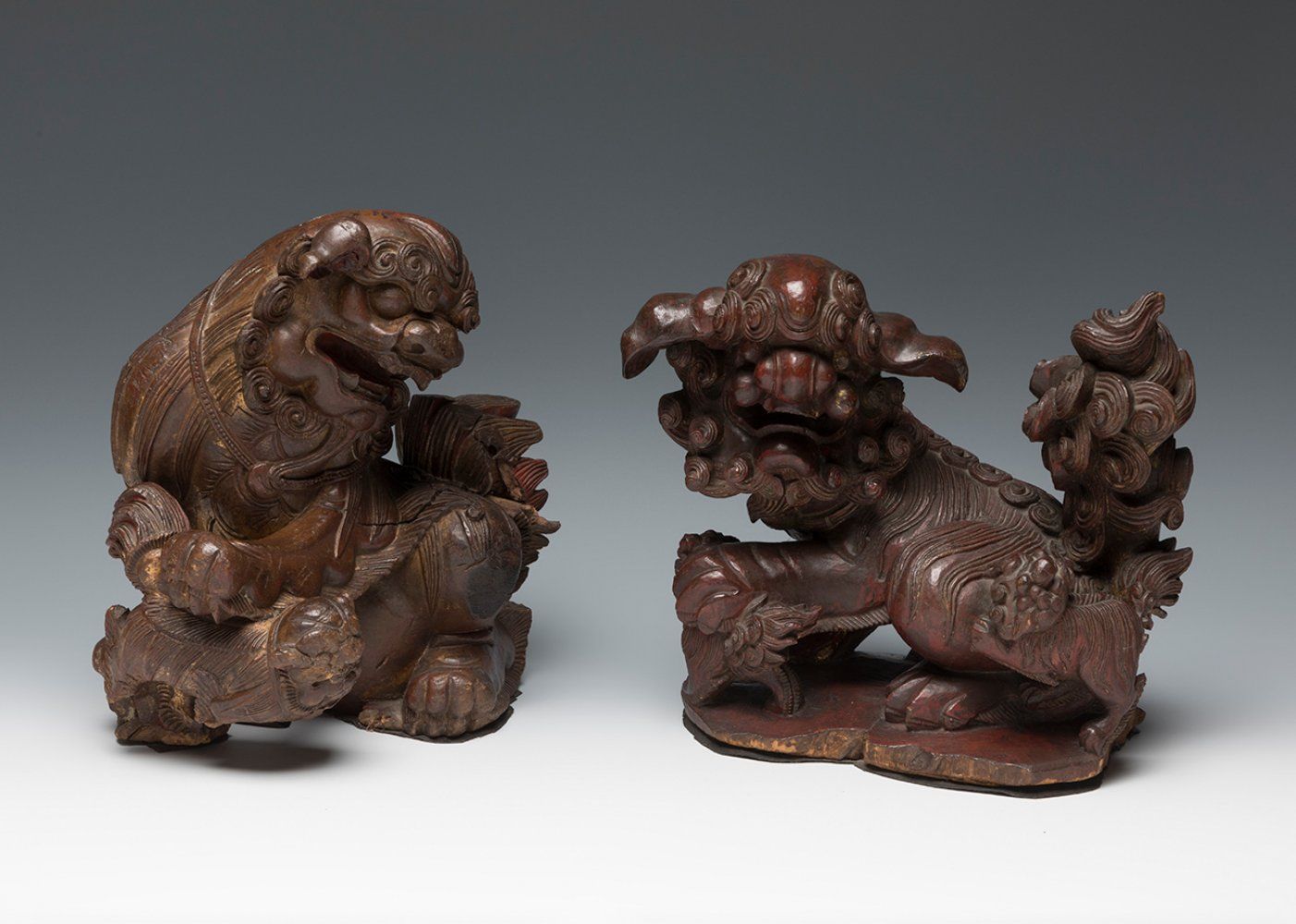Description
Two Foo dogs, Qing dynasty. China, 18th century. Carved, polychromed and gilded wood. Some flaws and flaws in wood and polychromy. Measurements: 27 x 20 x 30 cm (largest). Two of Foo dogs, from the Qing dynasty, China, 18th century, carved, polychromed and gilded wood. The foo dog, similar to a lion, is an important symbol in Chinese Taoist culture and, through its influence, also in Japanese and Thai culture. It is identified with protection against evil spirits, and hence they are often depicted in pairs at the entrance of temples, imperial tombs, palaces, government buildings, etc. They are also known as Imperial Guardians, and were very common in traditional Chinese art. They are attributed with mythical powers of protection, and appear as early as the Han Dynasty (206 BC - 220 AD) at the entrance of important buildings. Today, foo dogs are still used as decoration and symbolic elements at the entrance of all kinds of buildings, from hotels to supermarkets. In fact, they can be found both in China and in other countries with a Chinese emigrant population.
9
Two Foo dogs, Qing dynasty. China, 18th century. Carved, polychromed and gilded wood. Some flaws and flaws in wood and polychromy. Measurements: 27 x 20 x 30 cm (largest). Two of Foo dogs, from the Qing dynasty, China, 18th century, carved, polychromed and gilded wood. The foo dog, similar to a lion, is an important symbol in Chinese Taoist culture and, through its influence, also in Japanese and Thai culture. It is identified with protection against evil spirits, and hence they are often depicted in pairs at the entrance of temples, imperial tombs, palaces, government buildings, etc. They are also known as Imperial Guardians, and were very common in traditional Chinese art. They are attributed with mythical powers of protection, and appear as early as the Han Dynasty (206 BC - 220 AD) at the entrance of important buildings. Today, foo dogs are still used as decoration and symbolic elements at the entrance of all kinds of buildings, from hotels to supermarkets. In fact, they can be found both in China and in other countries with a Chinese emigrant population.
